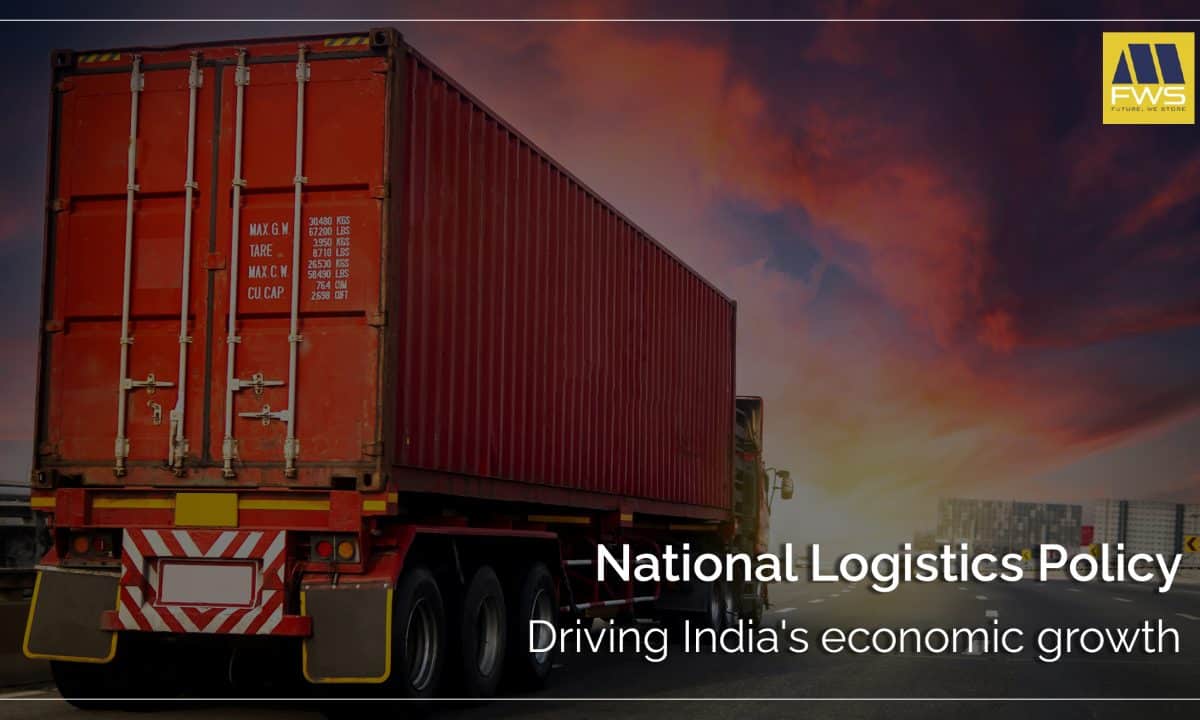Blog

National Logistics Policy: Driving India’s economic growth
The logistics sector, which is estimated to be worth $215 billion and growing at a CAGR of 10.5%, is seen to be the core of the Indian economy. This industry also employs about 22 million individuals directly and indirectly. The industry does, however, face a number of difficulties, including issues with the taxation system and warehousing, a high order intensity rate, and other significant supply chain costs. The newest National Logistics Policy is quite helpful in this situation. It intends to boost India’s ability to compete internationally, increase employment, and make doing business easier, all of which will help India establish itself as a logistics powerhouse. Let us explore more about how the National Logistics Policy will fuel India’s economic growth over the coming years.
Why the National Logistics Policy is required
With more than 20 governmental bodies, 37 export promotion councils, 40 PGAs, 500 certificates required, and 10,000 items to be exported, India’s logistics industry is extremely dispersed and complicated. The industry also includes 50 IT habitats, banks, 36 logistics activities, insurance firms, 168 CFSs, 129 ICDs, and 200 shipment agencies. 500 certificates as well as 81 authorities are necessary for export and import. The National Logistics Policy was put into place by the government as a solution to this problem.
How the National Logistics Policy will work
Our new National Logistics Policy has four different aspects: Unified Logistics Interface Platform (ULIP), Integration of Digital System (IDS), System Improvement Group (SIG), and Ease of Logistics (ELOG). As part of ULIP, the government intends to combine seven departments onto a single platform to give logistics businesses details about the flow of freight around the nation. The platform features a unique strategy that is one-of-a-kind in the world. This underlines the value of data in the logistics sector by bringing in data from all the ministries involved. Similarly, a modern digital platform called Ease of Logistics Services (E-Logs) has been introduced to help industry players address issues with the government.
The policy’s adoption would alter the logistics sector by automating and digitizing processes. With the help of this policy, the supply chain will be unified, showing how well the different ministries work together. The policy will be further strengthened if used with early integration and infrastructure-building projects like The Sagarmala Policy, The Bharatmala Policy, and The Gati Shakti Programme. By integrating these initiatives, the country would have less difficulty with logistics support thanks to the launch of a single-window e-marketplace that would serve as a one-stop shop for essential information and knowledge exchange.
Scope of National Logistics Policy
A more flexible logistics structure that concentrates on the unorganized sector and the total trade network could help India realize its goal of becoming a $5 trillion economy by 2024–2025. NLP would give the industry the essential drive in this situation. On a macro level, NPL will boost warehouse capacity and promote faster connectivity in delivering consumer items closer to demand. The manufacturing and automotive industries will see a substantial increase in business as a result of the logistics sector’s growth and improved delivery processing times. NLP would increase energy in all industries and expand India’s international trade.
Given the unavoidable increase in global trade, the strategy will help India become self-sufficient or ‘Atmanirbhar’, draw in foreign investment, and open up new opportunities for the nation’s startup businesses. Furthermore, the strategy would significantly assist farmers by allowing them to trade their commodities more quickly, avoid wastage, and eliminate unwanted obstacles, thereby helping to reduce overall pricing.
The National Logistics Policy, according to the stakeholders, will revolutionize the Indian logistics landscape and make supply chains efficient. Businesses that develop logistics solutions believe that the newly designed strategy will facilitate a transition in logistics beyond the current over-reliance on roadways (over 60% share vs. 25% globally) and toward railways (30% share vs. about 60% worldwide) and waterways, which today account for 5% of the dynamic combination.
Conclusion
To conclude, the National Logistics Policy is a big leap in the right direction, and the industry is already seeing more local and international money flowing in. Additionally, the program would boost investment, promote creativity, and raise industrial competition. The strategy may increase India’s competence in an international market. It’s possible that India may soon rank amongst the top 25 nations on the World Bank’s Logistics Performance Index (LPI).

